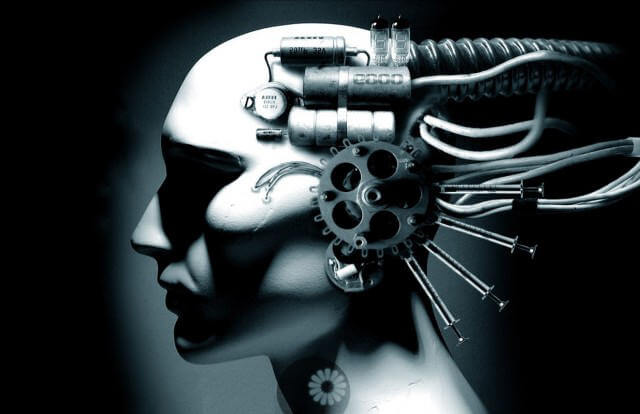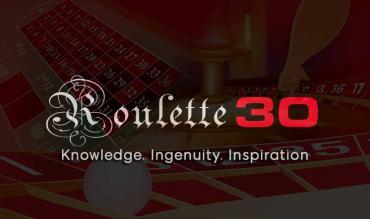Which is a more useful tool to play roulette, the human brain or a computer?
I feel that we are much better off the way we are right now. The human brain is probably the only thing in existence that cannot be improved upon except perhaps the slow passage of centuries. The computer has been called a “high speed moron”. That is to say is that although the modern computer is among the most sophisticated electronic system yet devised, it is still severely limited in its abilities and it falls well short of the human brain.
We have enormous mental powers and the intelligence to explore and utilize it. The computer can only carry out orders that are fed into it. It can only perform mathematical calculations and make mechanical comparisons. It cannot make valued judgments. It is true that computers can fly through many problems almost instantaneously saving us days or even months of laborious figuring, yet the computer is only as good as the person who is programming it.
Experts have said that the brain can capture and store, recall and program more than 600 bits of information per second. In the course of a lifetime, this is an enormous total, billions and billions of facts and impressions. On the other hand, our latest computers can handle only a few million characters in their memory banks. A comparison between the human brain and a computer boils down to this. We can think, the machines cannot and that is a really significant difference.
Let’s take a careful look at the brain. It has 4 basic powers:
- The power to absorb: the ability to take in information and knowledge. We do this by looking, listening, touching, tasting, and smelling. By using all 5 of our senses and keeping the gateway to our mind always open.
- The power of retention: the capacity to retain knowledge and recall it. Our brains are like endless rows of filing cabinets with relatively few packed file drawers full of all sorts of information. There is always much room for more.
- The power of judgment: Of logical thought. The more facts we feed our brain, the more we can reason intelligently
- The power of imagination: The ability to think creatively.
With the first 2 powers, we gather the raw material with which to think. With the second 2 powers, we evaluate old ideas and create new ones.
Put it another way, we have 4 switches in our minds. Turn on Switch number 1 and we gather information. Switch number 2 is our retentive powers. We retain and recall the facts that come in through the first switch. Switch 3 turns on our judgment. When it is on all the way, we think logically. Switch 4 is for imagination. With most people, this is the one that collects the most rust.
When we were children, we used the imagination switch all the time. As we grow older, we are seldom encouraged to even use the imaginative power that we spent our childhood cultivating. Instead we are taught to conform, to take no chances, to play it safe, to follow the crowd. So switch 4 soon gets rusty and we find it difficult to turn it back on when we get older.
As we grew up, people had a way of making us feel uncomfortable when they saw us using imagination. When we came up with new ideas they were often greeted with sneers or sarcastic comments and laughter. Sometimes we use these tactics on others, but we also use them on ourselves. We actually kill our own ideas before they are given a chance to prove themselves one way or the other.
 |
|
Transhumanism: what does it mean to be human? |
How Your Success Mechanism Works
“You” are not a machine. But new discoveries in the science of Cybernetics all point to the conclusion that your physical brain and nervous system make up a servo-mechanism which “You” use, and which operates very much like an electronic computer, and a mechanical goal-seeking device. Your brain and nervous system constitute a goal-striving mechanism which operates automatically to achieve a certain goal, very much as a self-aiming torpedo or missile seeks out its target and steers its way to it. Your built in servo-mechanism functions as both a “guidance system” to automatically steer you in the right direction to achieve certain goals, or make correct responses to environment, and also as an “electronic brain” which can function automatically to solve problems, give you needed answers, and provide new ideas or “inspirations.” In his book “The Computer and the Brain”, Dr. John von Newmann (also known for the development of Game Theory) says that the human brain possess the attributes of both
the analogue and the digital computer.
The word “Cybernetics” comes from a Greek word which means literally, “the steersman.” Servo-mechanisms are so constructed that they automatically “steer” their way to a goal, target, or “answer.”
The Two General Types Of Servo-Mechanisms
Servo-mechanisms are divided into two general types:
- the target, goal, or “answer” is known, and the objective is to reach it or accomplish it
- the target or “answer” is not known and the objective is to discover or locate it.
The human brain and nervous system operates in both ways.
British neuro-physicist W. Grey Walter has said that at least ten billion electronic cells would be needed to build a facsimile of man’s brain. These cells would occupy about a million and a half cubic feet, and several additional millions of cubic feet would be needed for the “nerves” or wiring. Power required to operate it would be one billion watts.
A Look at the Automatic Mechanism in Action
We marvel at the awesomeness of interceptor missiles which can compute in a flash the point of interception of another missile and “be there” at the correct instant to make contact
Yet, are we not witnessing something just as wonderful each time we see a center fielder catch a fly ball? In order to compute where the ball will fall, or where the “point of interception” will be, he must take into account the speed of the ball, its curvature of fall, its direction, wind-age, initial velocity and the rate of progressive decrease in velocity. He must make these computations so fast that he will be able to “take off” at the crack of the bat. Next, he must compute just how fast he must run, and in what direction in order to arrive at the point of interception at the same time the ball does. The player doesn’t even think about this. His built in goal striving mechanism computes it for him from data which he feeds it through his eyes and ears. The computer in his brain takes the information, compares it with stored data and memories of other successes and failures in catching fly balls. All necessary computations are made in a flash and orders are issued to his leg muscles, and he “just runs.”
Science Can Build the Computer but Not the Operator
Dr. Weiner has said that at no time in the for foreseeable future will scientists be able to construct an electronic brain anywhere near comparable to the human brain. “I think that our gadget conscious public has shown unawareness of the special advantages and special disadvantages of electronic machinery, as compared with the human brain,” he says. “The number of switching devices in the human brain vastly exceeds the number in any computing machine yet developed or even thought of for design in the near future.”
But even should such a machine be built, it would lack an “operator.” A computer does not have a fore-brain, nor an “I.” It cannot pose problems to itself. It has no imagination and cannot set goals for itself. It cannot determine which goals are worthwhile and which are not. It has no emotions. It cannot “feel.” It works only on new data fed to it by an operator, by feedback data it secures from its own “sense organs” and from information previously stored.
Is There an Infinite Storehouse of Ideas, Knowledge, and Power?
Many great thinkers of all ages have believed that man’s “stored information” is not limited to his own memories of past experiences and learned facts. ” There is one mind common to all individual men,” said Emerson, who compared our individual minds to the inlets in an ocean of universal mind.
Edison believed that he got some of his ideas from a source outside himself. Once, when complimented for a creative idea, he disclaimed credit, saying that “ideas are in the air.” and if he had not discovered it, someone else would have.
Dr. J. B. Rhine, head of Duke University’s Parapsychology Laboratory, has proved experimentally that man has access to knowledge, facts, and ideas, other than his own individual memory or stored information from learning or experience. Telepathy, clairvoyance, precognition have been established by scientific laboratory experiments. His findings, that man possesses some “extra sensory factor”, which he calls “Psi“, are no longer doubted by scientists who have seriously reviewed his work.
“We have found”, says Dr. Rhine, “that there is a capacity for acquiring knowledge that transcends the sensory functions. This extra sensory capacity can give us knowledge certainly of objective and very likely subjective states, knowledge of matter and most probably of minds.” Franz Schubert is said to have told a friend that his own creative process consisted in “remembering a melody” that neither he nor anyone else had ever thought of before. Many creative artists, as well as psychologists who have made a study of the creative process, have been impressed by the similarity of creative inspiration, sudden revelation, intuition, etc, and ordinary human memory.
Searching for a new idea, or an answer to a problem, is in fact, very similar to searching memory for a name you have forgotten. You know the name is “there” or else you would not search. The scanner in your brain scans back over stored memories until the desired name is “recognized” or “discovered”.
So as one can see, there are other elements to our brains that we are not even aware of. Ideas such as telepathy, clairvoyance, precognition , and the unconscious mind are other elements that have not even been factored into this discussion on the human brain vs. a computer. These topics alone are whole other subject to talk about in itself.
One of the fastest supercomputers in the world needed 40 minutes to simulate one single second of human brain activity.
Remember
These are just a few of the ideas and theories that I have come across and have read and wanted to share with all of you. Next time when you sit down with your computer and think about how wonderful it is, make sure you stop and think about how wonderful our own brain is. Remember, without the human brain there would be no computer in the first place.
By Romn Paras


